
Little Coyote & Morning Star
Allied to the Sioux tribes that destroyed Lt. Colonel George Armstrong Custer's 7th Cavalry command at the Battle of the Little Bighorn (also known as the Battle of the Greasy Grass, the Indians name for the Little Bighorn River), the Northern Cheyenne experience first-hand retribution for the victory from the United States military ... in September of 1876, they are part of the bands of Indians (along with Sioux Chief American Horse and the legendary Sioux warrior, Crazy Horse) that lose the Battle of Slim Buttes to Brigadier General George Crook's (the Apaches will call him Chief Wolf) command of 1,200 men (the two-day battle takes place in what will become Harding County, South Dakota), and in November of the same year, they are beaten in a dawn attack by 1,500 soldiers and Indian scouts of Colonel Ranald S. Mackenzie (known as Bad Hand to the Indians for his loss of two fingers on his right hand during the Civil War siege of Petersburg) near the Red Fork of the Powder River in the Wyoming Territory, a defeat that costs them their village (200 lodges are destroyed), supplies (700 animals are captured), and for Chief Morning Star, three sons, in what goes down in history as the Dull Knife Fight. Without food or shelter, suffering from exposure to winter conditions that drop below zero, the survivors of the encounters make their way to Camp Robinson (named for Lt. Levi H. Robinson, killed by Indians while a member of a wood detail building the camp in February of 1874, it will be renamed Fort Robinson in January of 1878) in the northwest corner of Nebraska, and surrender (Sioux warrior, crazy Horse, will be stabbed to death there with a bayonet by one of his guards in September of 1877), believing they will be allowed to live with Sioux clans at the nearby Red Cloud Agency, based on terms of the Fort Laramie Treaty of 1868 (which both Little Coyote and Morning Star both signed).
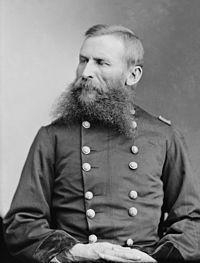
Crook
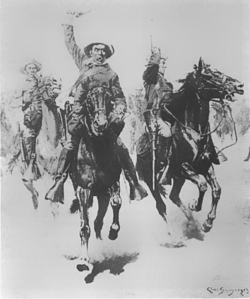
Charge Of Lt. Frederick Schwatka At
Slim Buttes
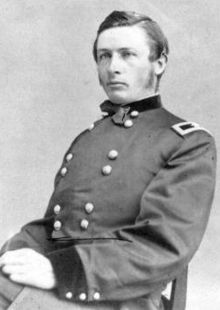
Mackenzie

Area Of The Dull Knife Fight
But in the aftermath of Custer's Last Stand, the authorities aren't interested in honoring Indian treaty demands, and the decision soon comes through channels that the Northern Cheyenne will live with their brethren, the Southern Cheyenne, at the Darlington Agency, near Fort Reno (named for Civil War General Jesse L Reno, killed at the Battle of South Mountain in 1862), in the Indian Territory. Transported south in August of 1877, the 937 followers of Morning Star and Little Coyote find kin that don't want them, a lack of game to hunt (dead buffalo remains litter the prairie), poor rations, and disease. When some of the band begin starving, and a measles outbreak hits the tribe in 1878, Little Wolf and Morning Star begin formulating secret plans to leave the reservation, and head back north to their ancestral homelands in what is now Wyoming and Montana. In the early morning hours of September 10, 1878, the Northern Cheyenne flee the reservation ... the group consists of between 297 and 353, men, women, and children.
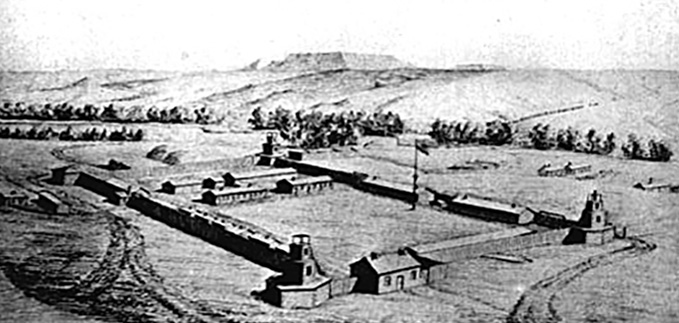
Fort Reno
Morning Star
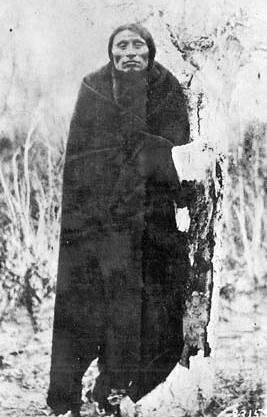
Little Coyote
By 3:00 in the morning their absence is noted, and the region goes into a panic with rumors of rampaging savages as the band crosses the Cimarron River and then moves into Kansas. The first violence of the escape takes place near Turkey Creek, where cowboys are attacked for their weapons and supplies. Pursued by a mixed command of over 200 cavalry and infantry under the command of Lt. Colonel William H. Lewis, the Cheyenne are almost captured at a Kansas site called Battle Canyon (after an over-eager brave fires too early and gives away the ambush that is planned ... the action will come to be known as the Battle of Punished Women's Fork), but escape when the army troops lose their leadership when Lewis is hit in the leg by an Indian sniper and bleeds to death. Making up for the supplies lost during the encounter, crossing Kansas, the Northern Cheyenne kill roughly 40 white men and boys they encounter ... tit for tat, elderly Cheyenne that can't keep up with the pace of the escape are done away with by white posses (no one will ever be found guilty for any of the deaths, though later, several Indians are placed on trial). Moving across Kansas and into Nebraska, the march of the Indians becomes a running battle as they are pursued by 10,000 soldiers (from Fort Wallace, Fort Hays, Fort Dodge, Fort Riley, and Fort Kearney) and 3,000 settlers from nearby communities ... five times they are caught, but each time they manage to escape due to the battle leadership of Little Coyote and Morning Star (keeping their people in rugged country the Army has trouble maneuvering through). After six weeks on the run, the Cheyenne chiefs hold a council in which one portion of the group decides to follow Morning Star to the Red Cloud Agency, while another band goes with Little Coyote to the Sand Hills of Nebraska (eventually, the survivors of both groups will be brought together again, when the United States government finally creates a reservation for the Northern Cheyenne in 1884 in southeastern Montana), intent on continuing their odyssey to the north.

Stump Horn And Family During Their Flight
In a blinding snowstorm, on October 23, 1878, two days days from Fort Robinson, Morning Star and his band of followers are stumbled upon by a local scout and finally surrounded by the Army. Hungry, cold, and outnumbered, they agree to move to the fort to further negotiate their futures, still wanting to have homes in their former hunting grounds in Montana (as they proceed to their destination, weapons are disassembled and their pieces are given to the women of the band to hide on their bodies or as pieces of jewelry and clothing adornments ... older weapons are given to the Army) ... the Army takes the Indians' ponies, but does distribute rations, including sugar and coffee. At the fort, they are placed in a barracks structure built to hold 75 soldiers, not the 150 Indians it soon contains (the structure is about the size of a single tennis court) ... and at first, they are free to roam the compound during the day. Things change however when word is received from the Secretary of the Interior, Carl Schulz, that the Northern Cheyenne must return to the Darlington Agency, Captain Henry W. Wessells, Jr. becomes the new commanding officer of Fort Robinson, and Morning Star's son, Bull Hump leaves the fort to visit relatives living with the Sioux at their Pine Ridge Reservation. Vowing they will die before going back south, Morning Star's band is soon confined to the too small barracks, bars are placed on the windows, and to gain compliance to move south again, Wessells cuts off rations to the Indians, including refusing to give them wood for heating.
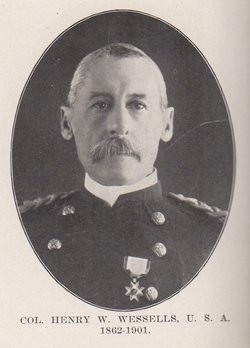
Wessells, Jr.

Recreated Barracks
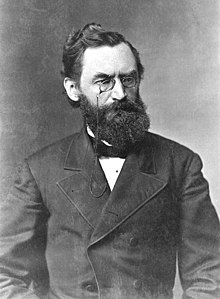
Schurz
Finally pushed too far again (Indian negotiator, Wild Hog is taken prisoner and put in shackles attempting to talk Wessells into providing the Cheyenne rations) on the night of January 9, 1879, with weapons reassembled, the Indians fire on their guards and break out of the compound, with the U.S. Army in close pursuit. By morning, 65 escapees are back in captivity, with 23 wounded during their brief flight. Over the next two weeks, more of the Northern Cheyenne are found and taken prisoner (Morning Star makes it to the Pine Ridge Agency and is eventually allowed to live out his years near Fort Keogh in the Montana Territory where a new Cheyenne reservation has been created ... he dies there in 1883 at the age of 73), or killed resisting the authorities. Eventually, the escapees are reduced to a group of 32 men, women, and children, led by Little Finger Nail, which Wessells' command locates about 35 miles northwest of Fort Robinson in the Hat Creek Bluffs.

The Barracks Breakout
Memorial
Forming a roughly circular defensive position in a dry creek bed (that will soon be known as "The Pit"), the 32 are surrounded by four companies of soldiers, about 150 men. Surrender requested, when it is refused, a firefight begins between the two opposing sides. First moving to within first 12 yards, and then 5 yards, Wessels' men pound the Indian position with carbine fire ... twice they stop to once more request the surrender of the Cheyenne, and are greeted with more bullet refusals, one of which wounds Wessells in the head. Eventually, as soldiers fire into "The Pit" from its lip, three warriors, singing their death songs (one with a revolver, one with a knife, and one with only his bare hands), jump into their attackers and are shot down, ending the one-sided fight, soon to be called the Fort Robinson Massacre, a clash that claims the lives of 17 men (one of them, the group's leader, Little Finger Nail), 4 women, and 2 children, while severely wounding an additional six of the nine Northern Cheyenne that are left alive when the fighting finally ends (the dead are buried together where they fell, until 1994, when they are reclaimed by their tribe and re-interred at the Northern Cheyenne Reservation on a hill overlooking Busby, Montana). Army casualties consist of three wounded soldiers, that includes Wessells, and the deaths of five ... Farrier George Brown, Sergeant James Taggert, Private George Nelson, Private Henry A. DuBlois, and Indian Scout Woman's Clothes).

"The Pit" By Frederic Remington - 1897

Through The Smoke Sprang A Daring Soldier By Frederic Remington - 1897

Newspaper Account
The heroic and tragic endurance Exodus finally over, and their battles with U.S. authorities completed ... the massacre contributes one more blight to the history of western expansion across the North American continent. Summed up by a New York Times, an editorial of the time states: "The bloody affair at Fort Robinson is, let us hope, the final scene in an Indian drama which, from beginning to end, has been a disgrace to the Government and the people ... it is demonstrable fact that the Government had been shamefully remiss in its treatment of these Indians, and thus tempted them to the revolt which has had so bloody a course and ending." Amen!
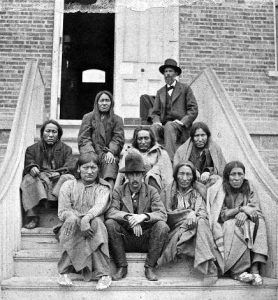
Cheyenne Prisoners
The Final Resting Place Of Little Coyote
And Morning Star
No comments:
Post a Comment